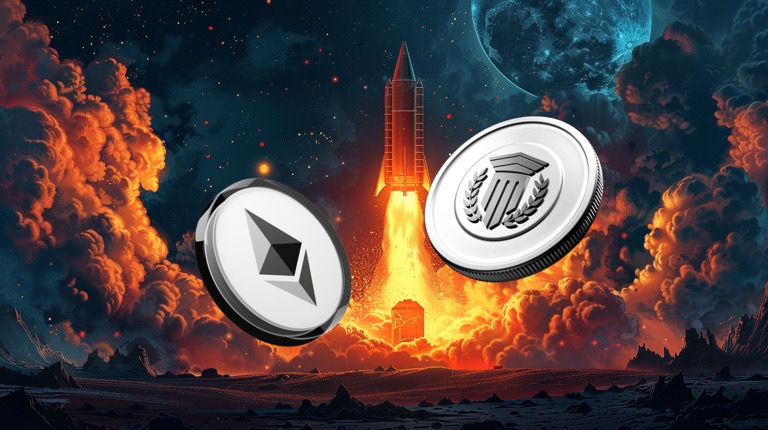Ethereum’s $3.8 Billion Unstaking Surge: A Storm Brewing or a Strategic Shift?
- Gator

- Aug 17
- 4 min read

Introduction
Ethereum, the backbone of decentralized finance (DeFi), is facing a pivotal moment. As of August 2025, a record-breaking 877,106 Ether (ETH), valued at $3.88 billion, sits in the network’s unstaking queue, with validators and investors facing a 15-day wait to withdraw their assets. This surge, the largest since January 2024, has sparked heated debate: is it a sign of profit-taking after ETH’s 60% yearly rally to $4,500, or a strategic repositioning fueled by institutional maneuvers and market dynamics? With $62 billion in ETF inflows and corporate treasuries snapping up ETH, the stakes are high. Yet, technical signals, macroeconomic risks, and DeFi’s lending turmoil cast shadows over ETH’s price stability. As the crypto market teeters on the edge of an altcoin season, Ethereum’s next move could redefine its trajectory—or trigger a painful correction.
The Unstaking Surge: What’s Driving the Exodus?
Ethereum’s proof-of-stake (PoS) system, which secures the network with 35.3 million ETH (29.5% of supply) staked across 1.08 million validators, relies on a tightly controlled exit queue to prevent destabilizing withdrawals. The current backlog of 877,106 ETH, led by platforms like Lido (285,000 ETH), EthFi (134,000 ETH), and Coinbase (113,000 ETH), dwarfs the 680,000 ETH peak in July 2025, when wait times hit 12 days. Analysts point to multiple drivers. First, ETH’s climb to $4,500, a multi-year high, has lured long-term stakers to cash in, with Glassnode reporting 84.7% of holders in profit. Second, the Pectra upgrade in May 2025, raising the staking cap from 32 ETH to 2,048 ETH, has spurred validator consolidation, prompting exits to optimize operations. Third, a spike in DeFi lending rates on platforms like Aave, peaking at 18% in July, has unraveled leveraged “looping” strategies, forcing users to unstake liquid staking tokens (LSTs) like stETH to repay loans. These factors have created a perfect storm, clogging the queue and raising fears of sell pressure.
The Bullish Counterweight: Institutional Hunger and Staking Demand
Despite the unstaking wave, Ethereum’s fundamentals remain robust. Since May 1, 2025, strategic reserves and spot ETH exchange-traded funds (ETFs) have surged 140%, holding 10 million ETH, per strategicethreserve.xyz. Institutional giants like BlackRock and ARK Invest, alongside treasury firms like SharpLink ($2 billion in ETH) and BitMine ($20 billion planned buy), are absorbing supply, with $4.4 billion in ETF inflows in July alone. Meanwhile, the staking entry queue has swelled to 435,000 ETH, signaling persistent demand, as corporations chase yields and DeFi bridges see $8 billion in inflows over three months. Analysts like Ignas argue that this institutional buying, coupled with potential ETH staking ETFs by October 2025, could offset sell pressure, with some investors unstaking to reposition into these products. The narrative of Ethereum as a “blue-chip” asset, bolstered by the SEC’s 2025 staking exemptions, keeps bulls optimistic.
Price Implications: A Delicate Balance
ETH’s price action hangs in the balance. Trading at $4,500, it’s just $378 shy of its December 2021 all-time high, but a recent 7% dip from $4,844 reflects volatility tied to a hot U.S. Producer Price Index (PPI) print. Technicals show a critical support at $4,200, with $1.2 billion in long liquidations at risk if breached, per CoinGlass. A deeper retracement to $4,100–$3,900, aligning with the 0.5–0.618 Fibonacci zone, is possible if selling intensifies. Conversely, a break above $4,878 could spark price discovery, with analysts like Nancy Lubale eyeing $7,500–$13,000 by year-end, driven by ETF momentum and network upgrades like Fusaka. However, CoinGlass data warns of a $1.82 billion short liquidation cluster at $4,499, suggesting a volatile path ahead.
Critical Challenges: DeFi Turmoil and Macro Risks
The unstaking surge exposes deeper vulnerabilities. The July 2025 spike in Aave’s ETH lending rates to 18% triggered a “liquidation wave” in looping strategies, depegging LSTs like stETH and adding pressure to the exit queue. This fragility, noted by Galaxy Digital’s Lucas Tcheyan, highlights DeFi’s sensitivity to leverage, with LST discounts exacerbating sell-offs. Arbitrageurs buying discounted LSTs to unstake for full ETH value further clog the queue, per Coinlive. Meanwhile, macroeconomic risks loom: NATO-Russia tensions and Federal Reserve rate uncertainty, flagged by QCP Capital, could dent risk assets, as seen in Bitcoin’s 8% drop in July 2025. The Crypto Fear & Greed Index at 71 (“Greed”) signals speculative overcrowding, a precursor to corrections in prior cycles.
The Bigger Picture: Ethereum’s Evolving Role
Ethereum’s $64 billion DeFi TVL and $480 billion market cap underscore its dominance, but competition from layer-1 rivals like Solana ($9.6 million in weekly fees) and Tron ($14.3 million) challenges its edge. The Treasury’s digital ID proposal for DeFi, discussed previously, adds regulatory pressure, potentially clashing with Ethereum’s permissionless ethos. Yet, the GENIUS Act and dropped SEC cases signal a U.S. regulatory thaw, boosting ETH’s appeal. The unstaking surge, while concerning, may reflect strategic shifts—validators optimizing post-Pectra or investors rotating into ETFs—rather than a mass exodus. Still, the market’s reliance on institutional flows and leveraged strategies risks amplifying volatility if sentiment shifts.
Conclusion: Navigating Ethereum’s High-Stakes Moment
Ethereum’s $3.8 billion unstaking queue is a double-edged sword: a potential harbinger of sell pressure or a sign of sophisticated repositioning. Institutional buying, ETF inflows, and staking demand provide a sturdy foundation, but DeFi’s leverage woes and macro uncertainties threaten stability. Traders should watch the $4,200 support and $4,878 resistance, with a break below risking a 10% drop and a breakout above signaling a run to $7,500+. As Ethereum eyes mass adoption, balancing technical upgrades, regulatory compliance, and market dynamics will be critical. For now, investors must tread carefully, weighing bullish catalysts against the specter of a crowded trade in a volatile world.





Comments